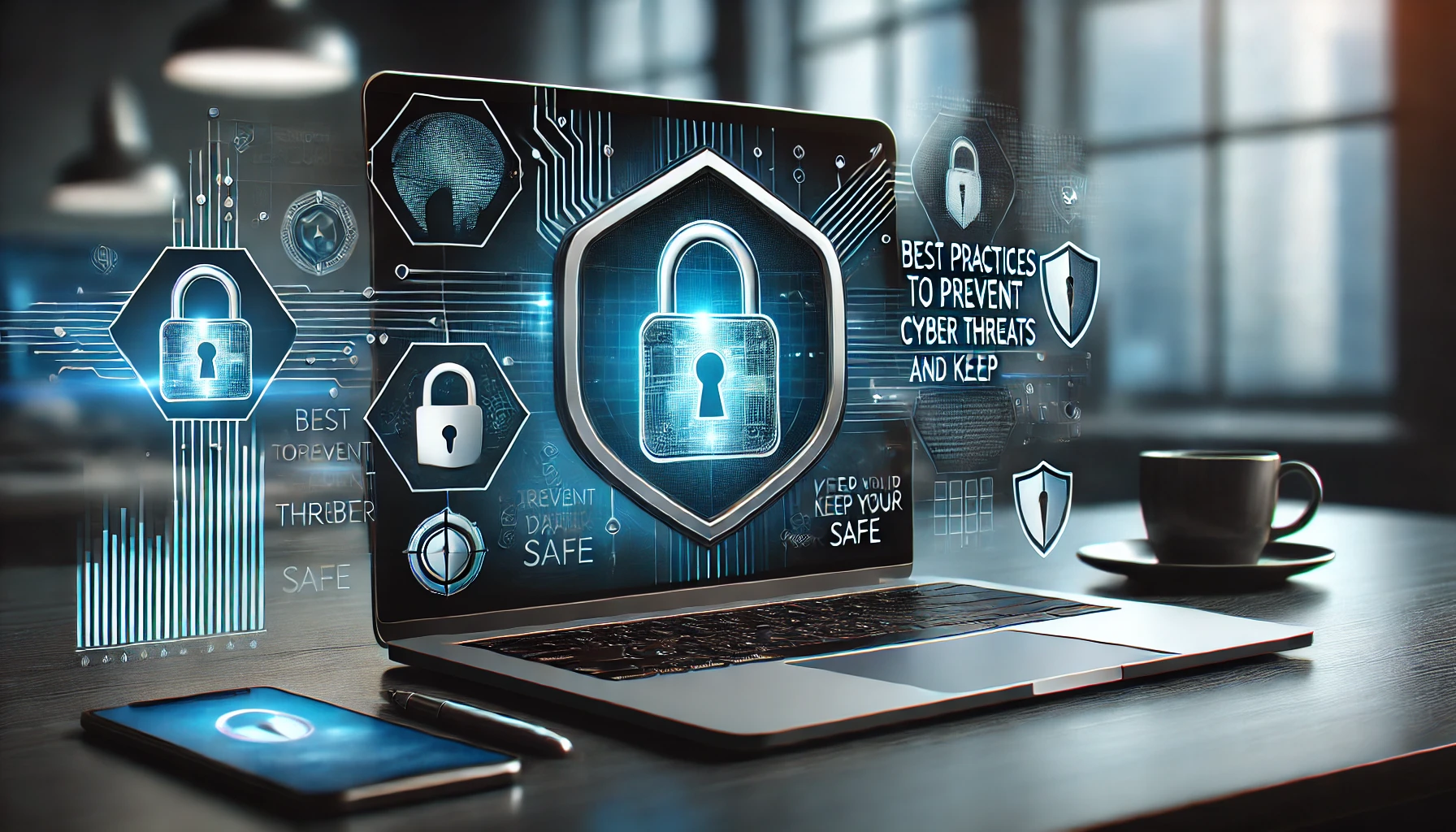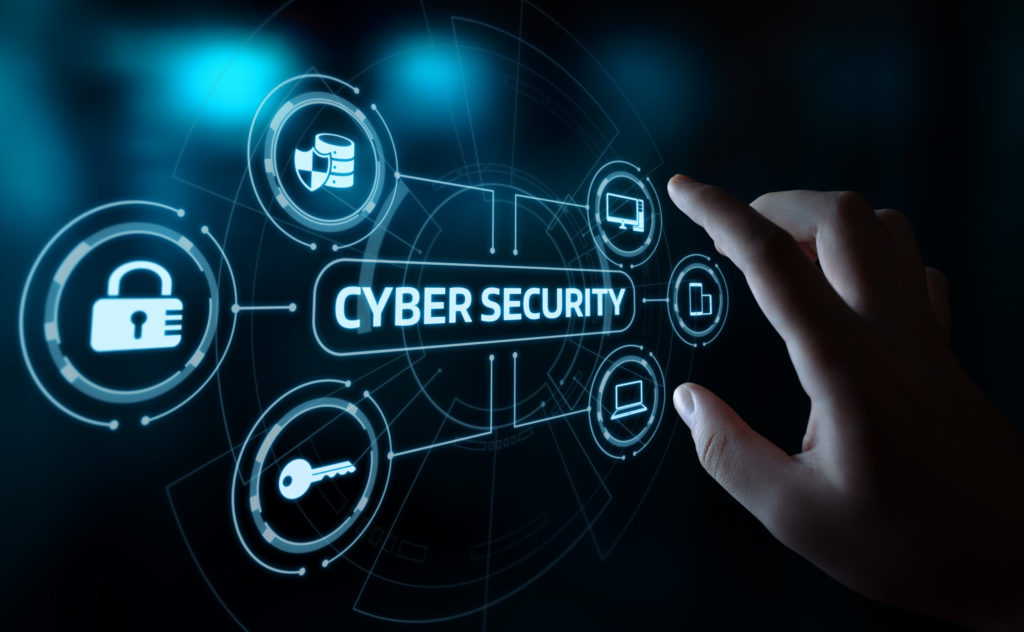
As technology advances, the risks associated with cyber threats also grow, making cybersecurity a vital part of any organization’s strategy. Securing data, protecting privacy, and maintaining trust with clients and stakeholders are fundamental. Here’s a guide on the best practices to safeguard your data and reduce vulnerability to cyber threats in 2024. Here are the overview on Cyber Security Strategy.
When it comes to protecting your organization from cyber threats, adopting cybersecurity best practices is essential. Key measures include implementing strong passwords, using two-factor authentication, and ensuring regular software updates. For businesses, additional layers such as data encryption, employee training, and access limitations are crucial in preventing attacks. Mobile device security, cloud encryption, and securing remote access via VPNs help keep data safe, especially with remote work trends. Staying proactive through regular audits, risk assessments, and monitoring cloud activity further strengthens defenses. Building a cyber-resilient organization means staying informed, being vigilant, and creating a culture of security.
Why is Cybersecurity Important for Your Organization?

Cybersecurity goes beyond just preventing data breaches—it’s about maintaining business continuity and reputation. Every organization, regardless of size, is a potential target. Weak cybersecurity practices can lead to severe financial and reputational losses. This makes it essential to implement a comprehensive cybersecurity strategy that’s continuously monitored and updated.
Top 6 Benefits of Improving Organizational Cybersecurity
- Enhanced Protection Against Data Breaches – Keeps sensitive information secure.
- Reduced Financial Losses – Saves organizations from costs related to data recovery and fines.
- Increased Customer Trust – Strengthens client relationships by showing a commitment to security.
- Improved Operational Efficiency – Secures systems, reducing downtime due to breaches.
- Compliance with Regulations – Ensures adherence to data protection laws, reducing legal risks.
- Competitive Advantage – Enhances reputation, making the organization a preferred choice.
Developing Cloud Security
Cloud security is essential with the rising trend in remote work and cloud storage. Choose reputable, secure cloud providers, implement encryption, and closely monitor access. An added layer of cloud security safeguards sensitive data and prevents unauthorized access.
Using Zero Trust in Combination with a VPN
The Zero Trust model assumes no user or device can be trusted until verified, complementing VPN use for remote access. Together, they provide a robust defense, verifying every access request to prevent unauthorized data breaches.
Top 12 Cybersecurity Best Practices for 2024

- Phishing Attacks: Train employees to recognize and avoid phishing emails, and implement email filtering tools to detect and prevent phishing attempts.
- Malware and Ransomware: Use trusted antivirus software and backup systems to protect data against malware and ransomware attacks. Update systems regularly to patch vulnerabilities.
- Social Engineering: Educate staff on common social engineering tactics, such as phone calls or emails from “IT support,” and encourage them to verify identities before sharing information.
- Insider Threats: Limit access to sensitive data based on role and implement activity monitoring to detect potential threats from within.
- Distributed Denial of Service (DDoS) Attacks: Use DDoS protection services to detect and mitigate attacks that could disrupt business operations.
Best Practices for Individual Users
- Using Strong and Unique Passwords: Use a combination of letters, numbers, and symbols for every account. Avoid reusing passwords across sites.
- Enabling Two-Factor Authentication (2FA): Add an extra layer of security by requiring a second form of verification, like a code sent to your phone.
- Being Cautious with Email and Social Media Links: Avoid clicking on links from unknown sources, as they could lead to phishing sites or malware downloads.
- Regular Software Updates and Patching: Ensure that your operating system, apps, and antivirus software are up to date to protect against vulnerabilities.
- Recognizing and Reporting Phishing Scams: Report suspicious emails to your IT department and mark them as spam to help prevent future attacks.
Best Practices for Businesses
- Establishing a Comprehensive Security Policy: Outline and enforce security policies across the organization, including acceptable use and incident response.
- Employee Training and Awareness Programs: Regular training can help employees stay informed about the latest threats and how to mitigate them.
- Regular Data Backups and Encryption: Back up data frequently and encrypt sensitive information to prevent unauthorized access.
- Limiting Access to Sensitive Information: Grant access based on role, and use multi-factor authentication for higher-level data access.
- Implementing Network Security Measures (Firewalls, VPNs): Use firewalls to control incoming and outgoing network traffic and VPNs to secure remote access.
Securing Mobile Devices and Remote Access

- Using Secure Wi-Fi and Avoiding Public Networks: Only connect to secure, password-protected networks to reduce exposure to potential threats.
- Protecting Mobile Devices with Screen Locks: Enable passcodes or biometric locks to prevent unauthorized access to mobile devices.
- Managing Remote Access with Virtual Private Networks (VPNs): Use a VPN to encrypt data and protect connections on public Wi-Fi.
- Using Mobile Security Software: Install trusted security apps to protect devices from malware and unauthorized access.
The Role of Cloud Security
- Choosing a Secure Cloud Provider: Select a cloud provider that adheres to the highest standards of security and data protection.
- Implementing Data Encryption in the Cloud: Encrypt sensitive information stored in the cloud to keep it secure.
- Monitoring Access and Cloud Activity: Regularly monitor who accesses your data in the cloud to detect and respond to unauthorized activities.
Implementing Cybersecurity Tools and Technologies
- Antivirus and Anti-Malware Software: Use reputable software to scan and remove malicious programs regularly.
- Firewalls and Intrusion Detection Systems (IDS): These provide a first line of defense by blocking unauthorized access.
- Vulnerability Scanners and Threat Intelligence: Continuously scan for vulnerabilities and stay updated on emerging threats.
- Endpoint Protection and Security Management: Secure all devices connected to the network to prevent security breaches.
The Importance of Regular Audits and Risk Assessments
- Conducting Cybersecurity Audits: Regularly assess security practices to identify and fix weaknesses.
- Regular Penetration Testing: Simulate attacks to identify potential security gaps before they can be exploited.
- Risk Assessment and Incident Response Planning: Plan for potential threats by identifying risks and preparing a response strategy.
Responding to a Cyber Attack

- Steps to Take if You Suspect a Breach: Disconnect affected devices, notify your IT team, and begin containment procedures.
- Incident Response Plan: Have a detailed plan in place to respond quickly to cyber incidents, including steps for recovery.
- Communicating with Stakeholders and Authorities: Notify clients, partners, and regulatory bodies as needed to maintain transparency.
Staying Updated on Cybersecurity Trends
- Following Industry News and Alerts: Stay informed about emerging threats and trends by following cybersecurity news.
- Attending Cybersecurity Webinars and Training: Regularly participate in cybersecurity workshops to stay knowledgeable.
- Keeping Up with New Threats and Security Practices: Continually adapt security practices as new threats emerge.
Conclusion: Building a Cyber-Resilient Mindset
Prioritizing cybersecurity isn’t a one-time task but an ongoing commitment. With regular training, vigilance, and a proactive approach, organizations can protect sensitive data and foster trust among clients and stakeholders. Remember, the best defense is a well-informed team and a strong, adaptive security strategy.
FAQs
Q1: What are the most common types of cyber threats?
- A: Common cyber threats include phishing attacks, malware, ransomware, social engineering, insider threats, and Distributed Denial of Service (DDoS) attacks. Each type exploits different vulnerabilities, and understanding these threats can help in implementing specific preventative measures.
Q2: How can individuals protect themselves from phishing attacks?
- A: To avoid phishing attacks, never click on links or download attachments from unknown or suspicious emails. Use email filters to block spam, verify the sender’s identity, and report any suspected phishing emails to your IT department or email provider.
Q3: Why is it important to use strong, unique passwords?
- A: Strong, unique passwords prevent unauthorized access by making it difficult for hackers to guess or crack your login details. Using a mix of letters, numbers, and symbols for each account, along with password managers, helps secure your information.
Q4: What is Two-Factor Authentication (2FA), and how does it enhance security?
- A: Two-Factor Authentication adds a layer of security by requiring a second verification step, like a code sent to your phone, in addition to your password. This helps prevent unauthorized access, even if your password is compromised.
Q5: How often should software updates and patches be applied?
- A: Software updates and patches should be applied as soon as they become available. Regular updates fix known security vulnerabilities and help protect against the latest cyber threats.
Q6: What cybersecurity measures should businesses focus on?
- A: Businesses should establish a security policy, train employees, conduct regular data backups, use firewalls, secure remote access, and monitor access to sensitive information. Each measure is essential for building a strong defense against cyber threats.
Q7: How does a Zero Trust model improve security?
- A: The Zero Trust model improves security by requiring continuous verification of user identity and device trustworthiness, reducing the risk of unauthorized access within the network. It’s especially effective when combined with VPNs to secure remote work.
Q8: What are the advantages of using a VPN for remote access?
- A: A VPN encrypts your internet connection, protecting data transmitted between your device and the network. This is essential for securing remote access, especially on public Wi-Fi, by making it harder for hackers to intercept sensitive information.
Q9: Why is cloud security important, and how can data be protected in the cloud?
- A: Cloud security protects data stored online from unauthorized access and breaches. Choose secure cloud providers, use data encryption, and monitor access regularly to maintain data integrity and privacy in cloud environments.
Q10: How can I respond effectively to a cyberattack?
- A: If you suspect a cyberattack, immediately disconnect affected devices, notify your IT team, and follow the incident response plan. Quick containment and notifying relevant stakeholders help minimize damage and speed up recovery.
Q11: Why is ongoing cybersecurity education important?
- A: Cyber threats are constantly evolving, and ongoing education keeps individuals and businesses informed about new risks and best practices. Regular training helps foster a culture of security and vigilance against cyber threats.
Q12: What should I look for in a cybersecurity tool or software?
- A: Look for tools that offer robust protection features, such as antivirus, anti-malware, firewalls, intrusion detection, and regular updates. Choosing reputable cybersecurity software tailored to your organization’s needs is essential for effective defense.
